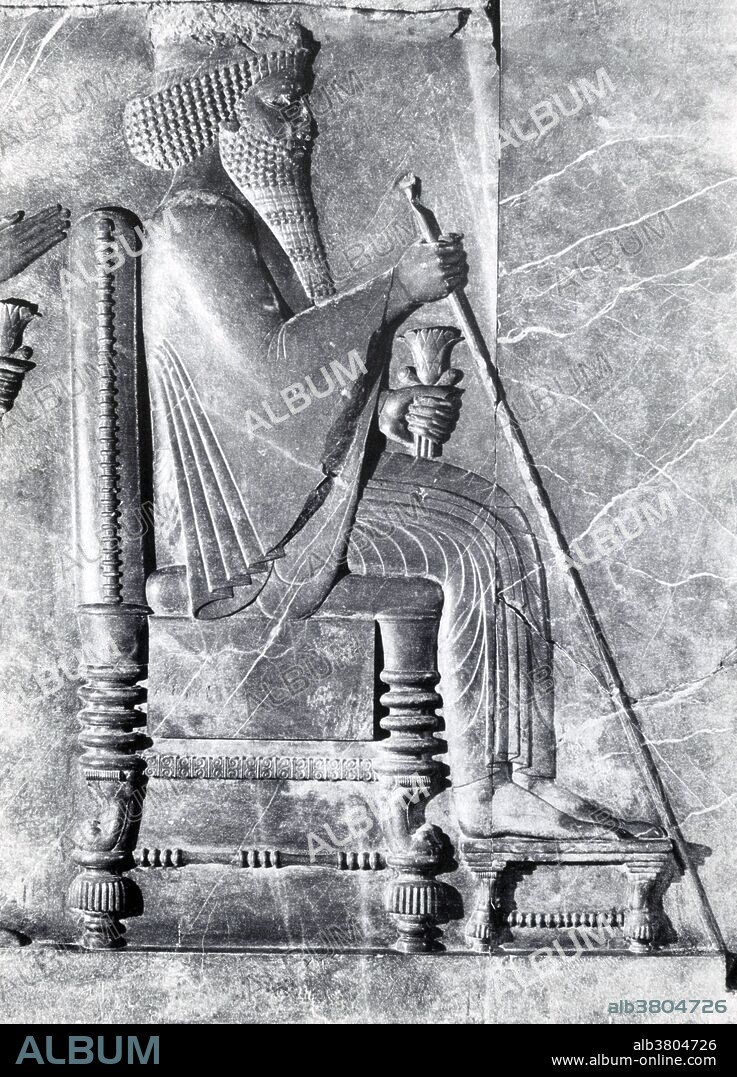alb3804726
Darius the Great, Persepolis, Iran

|
Añadir a otro lightbox |
|
Añadir a otro lightbox |



¿Ya tienes cuenta? Iniciar sesión
¿No tienes cuenta? Regístrate
Compra esta imagen.
Selecciona el uso:

Título:
Darius the Great, Persepolis, Iran
Descripción:
Ver traducción automática
Relief carving of Darius on his throne, holding a scepter and lotus, and receiving the delegations of the Empire, in Persepolis, Iran. Darius I (550-486 BC) was the third king of the Persian Achaemenid Empire. He ruled the empire at its peak, when it included much of West Asia, the Caucasus, parts of the Balkans, most of the Black Sea coastal regions, parts of the North Caucasus, Central Asia, as far as the Indus Valley in the far east, and portions of north and northeast Africa including Egypt, eastern Libya and coastal Sudan. Darius organized the empire by dividing it into provinces and placing satraps to govern it. He organized a new uniform monetary system, along with making Aramaic the official language of the empire. He also put the empire in better standing by building roads and introducing standard weights and measures. He had the cliff-face Behistun Inscription carved to record his conquests, an important testimony of the Old Persian language. The Achaemenid Empire during Darius' reign controlled the largest fraction of the world's population of any empire in history. Based on historical demographic estimates, Darius I ruled over approximately 50 million people, or at least 44% of the world's population.
Personas:
Crédito:
Album / Science Source / New York Public Library
Autorizaciones:
Tamaño imagen:
2957 x 4110 px | 34.8 MB
Tamaño impresión:
25.0 x 34.8 cm | 9.9 x 13.7 in (300 dpi)
Palabras clave:
ARQUEOLOGIA • ARQUEOLÓGICA • ARQUEOLOGICO • ARQUEOLÓGICOS • ARTE • BLANCO Y NEGRO • CIENCIA • CIUDAD ANTIGUA • CIVILIZACION ANTIGUA • EMPERADOR • ESCULTURA • FAMOSA • FAMOSO • FAMOSOS • FIGURA • GENTE • GOBERNANTE • HISTORIA • HISTORICO • HOMBRE • HOMBRES • IMPORTANTE • IRANIO • MASCULINO • MITOLOGIA: PERSA • OBRA DE ARTE • ORIENTE MEDIO • PERFIL • PERSA • PERSAS • PERSIA • PERSONA • PERSONALIDAD • RELIEVE • RETRATO DE HOMBRE • REY • RUINAS • SÍTIO • TALLA
 Pinterest
Pinterest Twitter
Twitter Facebook
Facebook Copiar enlace
Copiar enlace Email
Email
